By Pat Veltri
Hundreds of white iron crosses, marking the graves of men who died in the mines, fill the Dawson Cemetery. The crosses, most of them bearing death dates of 1913 and 1923, are the only tangible reminders of the coal camp town of Dawson, New Mexico. The town was dismantled and sold for salvage in 1950 when the owner, Phelps-Dodge Corporation shut down the mines. Dawson miners and their families relocated to Raton, Cimarron, and other nearby towns.
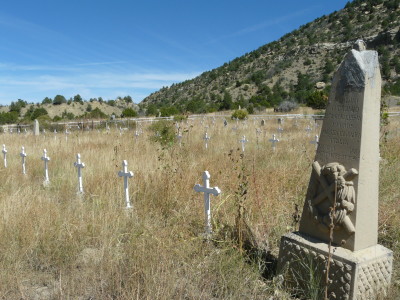
The mining town of Dawson was founded in 1901 when rancher John Barkley Dawson sold his 24,000 acres of coal-rich land to Charles Eddy and a partnership known as the Dawson Fuel Company.
In 1906, the property was purchased by the Phelps-Dodge Corporation. The corporation began to mine coal to sell to railroads and to use to smelt copper ore dug from their Arizona mines. The corporation’s mine operations, located in the immediate vicinity of Dawson, included ten mines, identified by the numbers one to ten.
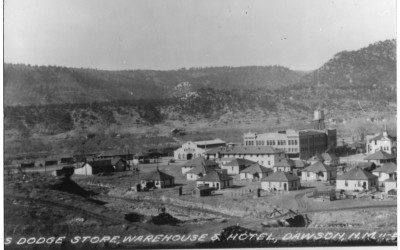
Dawson grew into a company town of about 9,000 people, and was one of the biggest towns in New Mexico in the 1920s. The majority of the miners were Italian, but most ethnic groups were represented in the town’s population.
In addition to constructing homes for the miners, the Phelps-Dodge Corporation built many other facilities, including a hospital, schools, a community swimming pool, an opera house, a golf course, two churches and a hotel. The merchandise in the Phelps-Dodge Mercantile Department Store equaled that of any big city department store.
Dawson suffered two major mining disasters. On Oct. 22, 1913, 263 men were killed in an underground explosion at Mine No. 2. Another tragic explosion on Feb. 8, 1923, in Mine No. 1, took the lives of 120 miners, many of them children of the men who died in 1913.
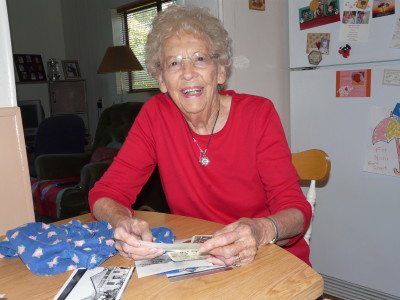
Ratonian Emagene (Buttram) Saracino was born in Dawson, attended Central School in downtown Dawson for her early schooling, and graduated from Dawson High School. Her parents, Luther and Mary Buttram, moved to Dawson in 1923, prior to the second explosion, from Granby, Missouri. Her father, who was the chief electrician for the Dawson mines, came to New Mexico for health reasons. Saracino was the fifth child in a family of six. Her siblings included brothers Jack and Charles, and her sisters, Barbara, Marian, and Mildred. The family moved to Raton in the late 1940s, a bit before the town’s closure.
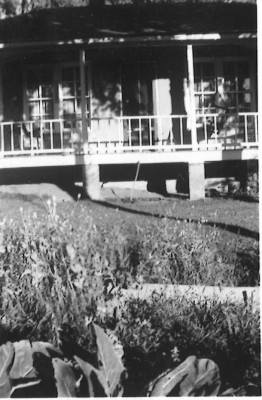
Saracino shares her memories of Dawson:
What section of Dawson did you live in? What do you remember about your home?
We lived downtown in a good-sized house with three bedrooms and an indoor bathroom. The house was heated with a big coal stove in the living room and there was also the kitchen stove. We had a beautiful yard and my folks always had a garden. My mother grew just about everything including beets, onions, lettuce, and sometimes cabbage.
Did you and your family attend church regularly?
Dawson had a Protestant Church and a Catholic Church. I went to the Protestant Church all the time that I lived in Dawson. We had no pastor, so several times a month a pastor would come from Raton and preach. Most of the young people attended Sunday school. Miss Hannah McGarvey kept the Sunday school together; no matter if there was only one person, she would be there.
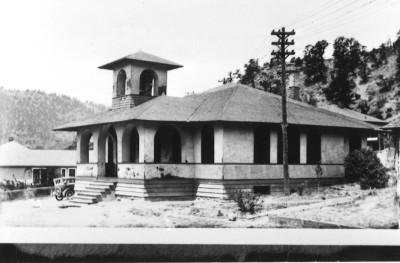
What can you remember about your school days in Dawson?
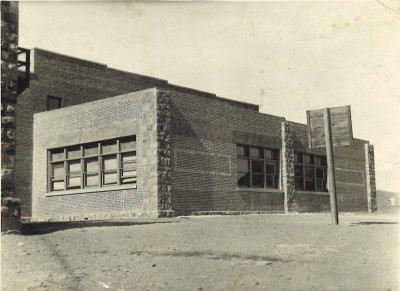
Dawson always had good teachers, and a great basketball and football team along with an outstanding band. I played saxophone in the band all through my high school days. We had a great band director, Herbert Bailey. He walked so straight. We just loved him!
What were the big celebrations in your family? What did you do to celebrate?
The Fourth of July. About four families would get together and go to Cimarron Canyon, and we’d have a lot of fun there. We went hiking and wading; we played baseball and shot fireworks, and our parents played with us.
Was there a company store in Dawson?
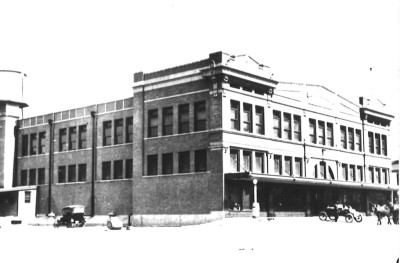
Yes, I worked in it when I was in high school. They had everything that you wanted, everything from ice to caskets. I worked in the grocery department. The last person hired in the grocery department was responsible for wrapping the bread. The bread was wrapped by hand, and then positioned in a machine that sealed the wrapping with wax. Three loaves of bread sold for 25 cents.
What did you do for fun?
We had to make our own fun, which we did by going on hikes in the mountains. We didn’t plan ahead; it was just something we did at a moment’s notice. We would take our lunch and usually spend the entire day.
I loved to ride my bike and spent a lot of time doing that. Of course we went to all of the football and basketball games.
Did you and your friends have a regular hangout?
The place where most of us hung out was the Sweet Shop. That was just a regular hangout for kids. The manager made us toe the mark; he wouldn’t have any nonsense at all. Cokes were 5 cents.
What leisure services did the town provide?
There was a nice swimming pool. Swimming was something I loved to do. It was free to all who lived there. Girls would swim from 1:00 pm to 3:00 pm and then the boys would swim from 3:00 pm to 5:00 pm. The water in the pool was not heated so it was very cold!
We had what was called the Opera House, but it was also the movie theater. We were fortunate in having the latest movies. On Thursday and Friday we had the same movie and then it changed to a different one on Sunday and Monday. It cost 13 cents to get in.
How were illnesses and injuries taken care of?
We had a very good hospital and dispensary, and very good doctors. We got all medicine, even aspirin, from the dispensary. Miners paid a small fee, which was taken from their paychecks every month, to cover medicine and medical services.
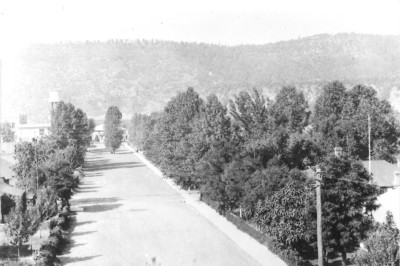
Were there ever any problems among different ethnic groups?
Each nationality lived in a separate section of town, but we all went to school together. We were friends with each other. There were never any fights between nationalities. It seemed like we got along real well.
How does life today compare to your life in Dawson?
We were law abiding people; we never had any crime. They had a jailhouse but I don’t know if anybody was ever in it. It just seemed like it was a good place to live, a good place for kids. Our parents trusted all of us to go anywhere we wanted around town because there wasn’t anyone or anything there to bother us.
Do you think your early life in the coal town of Dawson had any effect on your later life?
Well, I don’t know if it did or not. I did learn that lots of times when you think that something is the worst, it’s usually the best. All of us (young people) were so anxious to get out of Dawson—why I don’t know—because it was such a nice town and such a beautiful place. When I look back, I realize that Dawson was the best place that I ever lived.
What keeps the town alive in the hearts of former Dawsonites?
Every other year we have a Dawson reunion. Once again people who lived in Dawson come together and renew the good times we had. Nothing is there now except a few buildings and the cemetery, and you would never know that the sprawling town of Dawson once existed. All that is left is our memories!
Vintage photos are courtesy of Emagene Saracino.
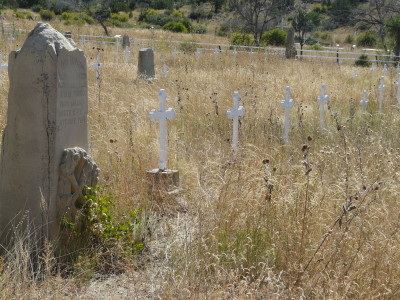
These three photos were taken by Jim Veltri. The Dawson Cemetery, which is on the National Register of Historic Places, is the only significant landmark remaining of the coal town of Dawson, New Mexico. The cemetery is filled with white iron crosses marking the graves of the hundreds of miners who lost their lives in two tragic mining disasters in Dawson. Other markers show the burial places of several residents of Dawson.

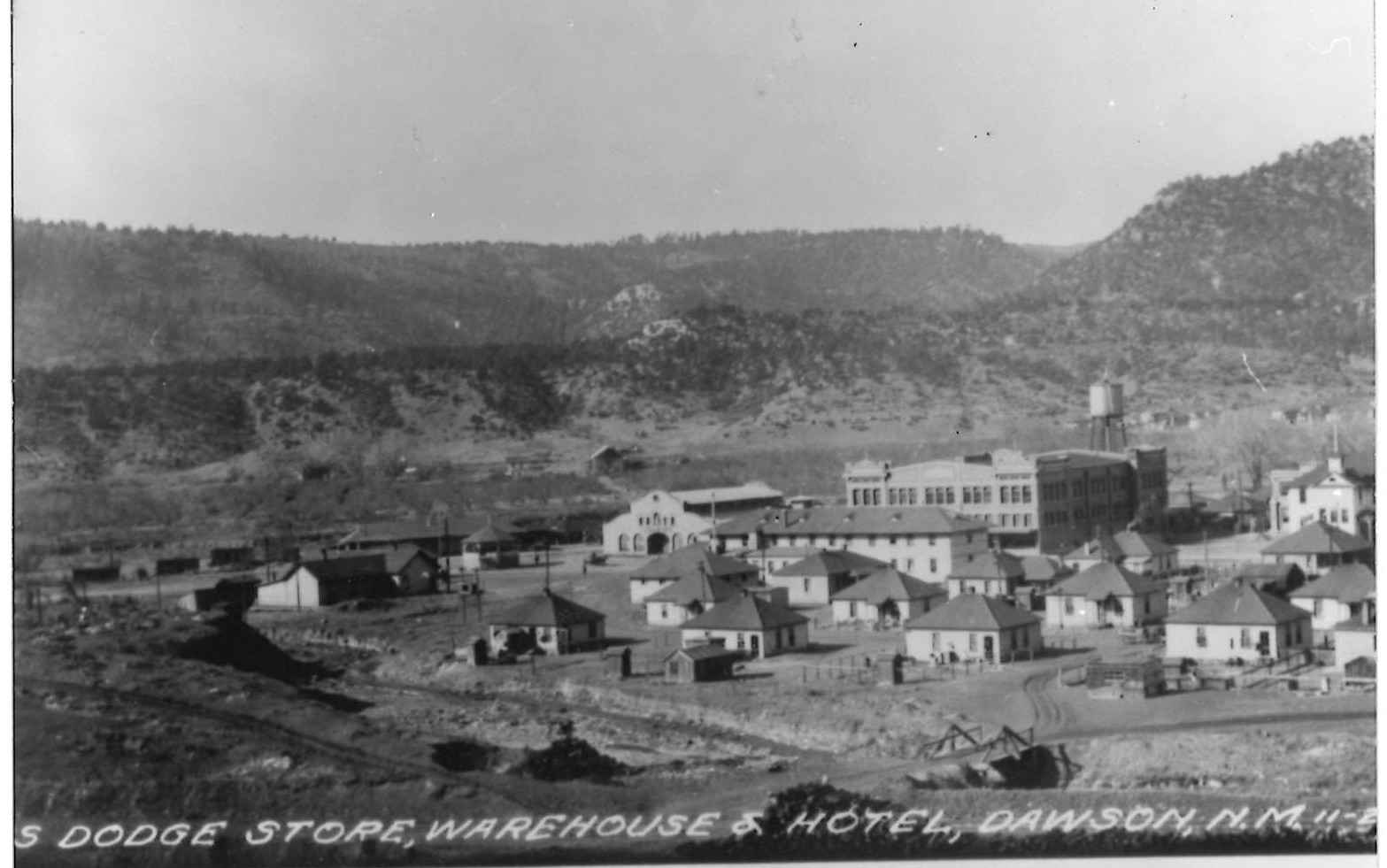
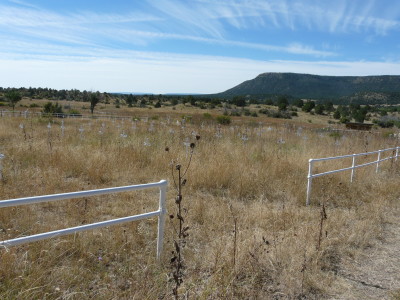
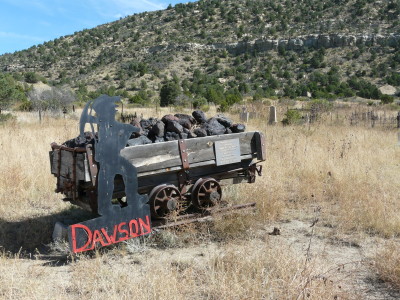
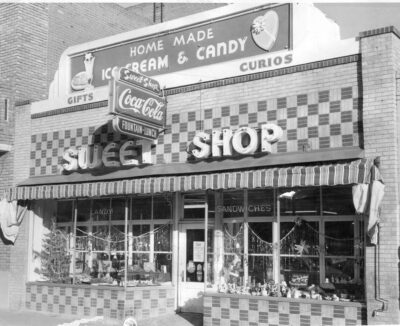
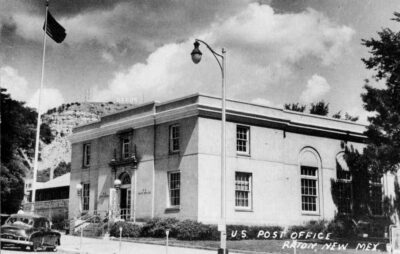
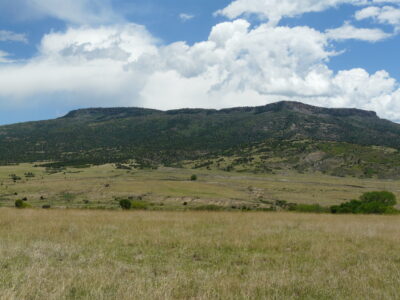
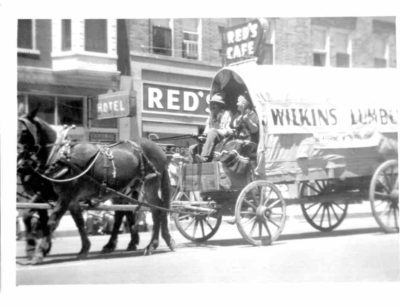
My Mom and Dad lived in Dawson from 1941 till 1950 when it closed. They then moved to San Diego California, and moved back to New Mexico in 1993. Their names are Alex and Rose Sapien. I have two older siblings that are buried in the Dawson Cemetery, Charles James Sapien and Renee Sapien who died when she was 5 years old of appendicitis. I was able to take my Mom to one of the reunions before she passed away in 2008. My Dad passed away in 1994 at MCMC Long Term care of Black Lung Disease and Parkinsons. Thanks for this article, it’s always good to hear about Dawson !!
My mother now 96 years of age was born on Dawson in sept. of 1921 and raised by her grandparents . After a mine accident she, her half sister and grandparents moved to Los Angeles, Ca. Mother has visited her brothers in Raton several times and I have also visited my uncles while on several motorcycle trips in the area. I always visit the cemetery and find it heart filling to walk amongst the grave sites..sometimes wishing they could talk of days gone bye. I enjoy near by towns and beautiful mountains and canyona and the history of the area .
The photos and story were very interesting
Very nice article and wonderful memories. Thank you Pat, Jim and Emagene.
very nice. THANK YOU
My father Attilio Tarufelli worked in the Dawson Mines. He came to the USA in 2907 from Fabriano, Italy. He worked in the Dawson mines (not sure) approximately between 1907 and 1917. I have some relatives buried at the Dawson cemetery but have never been able to locate them. That was a very nice article I enjoyed it so much.
Della Tarufelli Wetsel
Emagene, Your article captured some of the history of this area and was very interesting. We both enjoyed reading it. Eli and Susan Hronich
Thank you for your comment. Article was researched and written by Pat Veltri.